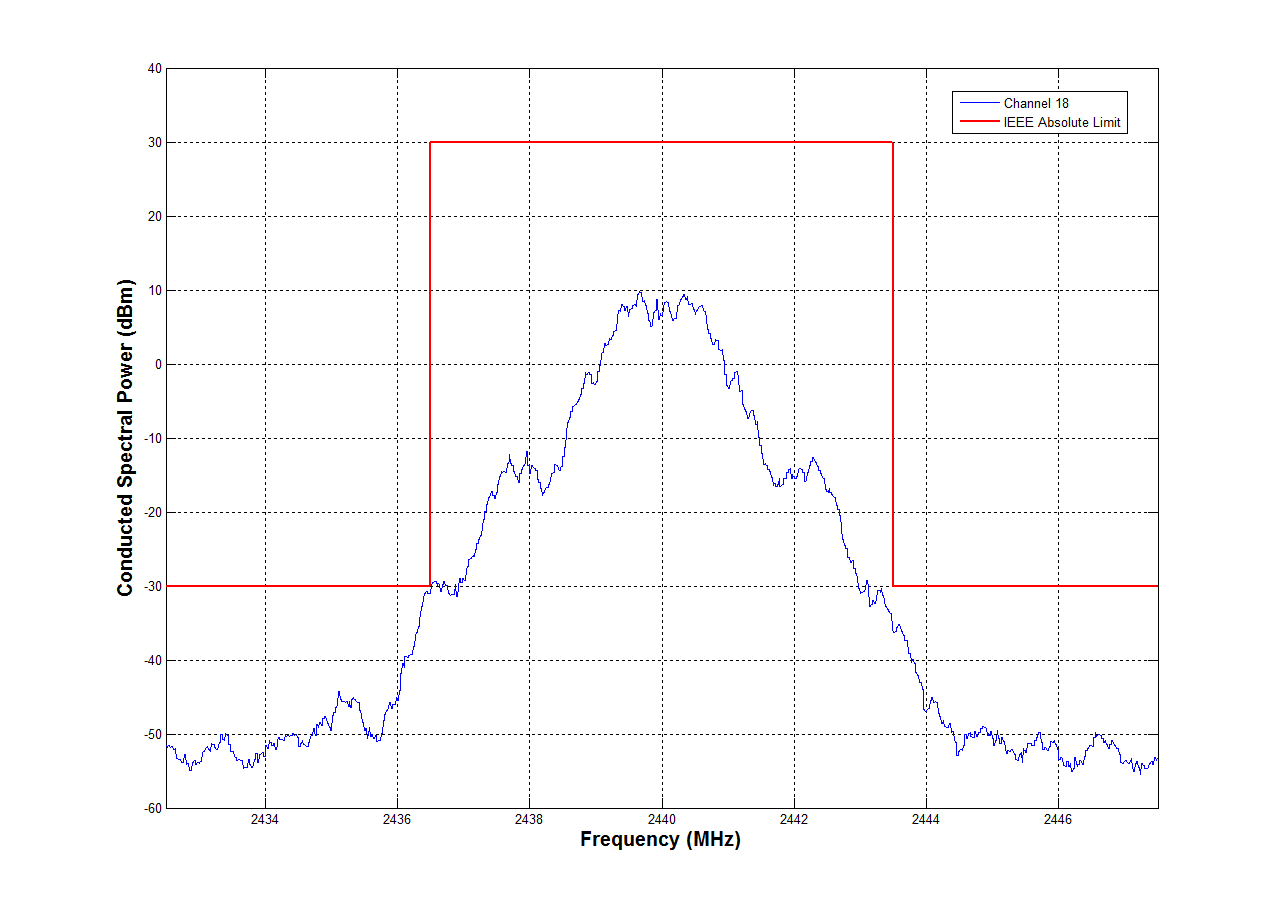SWRA465A August 2014 – July 2015 CC2530 , CC2530 , CC2530-RF4CE , CC2530-RF4CE , CC2592 , CC2592
- Using CC2592 Front End With CC2530
- A Marker - Delta Method
- Revision History
4.8 IEEE - Transmit Power Spectral Density (PSD) Mask
The IEEE standard 802.15.4 requires the transmitted spectral power to be less than the limits specified in Table 7.
Table 7. Transmit PSD Limits
| Frequency | Relative Limit | Absolute Limit |
|---|---|---|
| |f – fc| > 3.5 MHz | –20 dB | –30 dBm |
Figure 7 shows the transmitted PSD at TC = 25°C, VDD = 3.0 V and f = 2440 MHz, measured on the SimpleLink™ ZigBee® Network Range Extender Reference Design[3] with a 50 Ω load.
 Figure 7. Conducted Power Spectral Density, TXPOWER = 0xE5
Figure 7. Conducted Power Spectral Density, TXPOWER = 0xE5